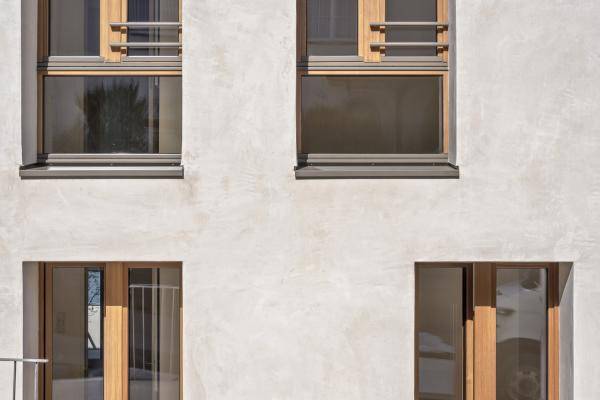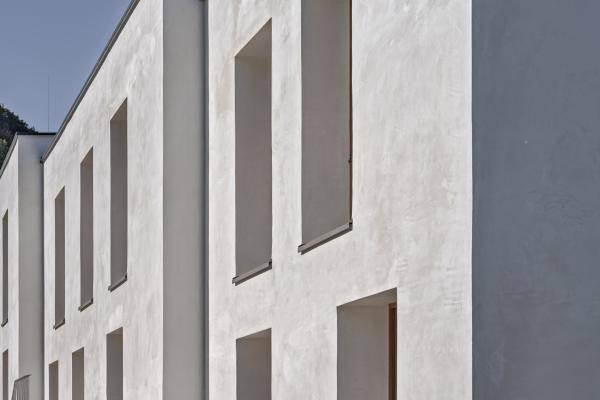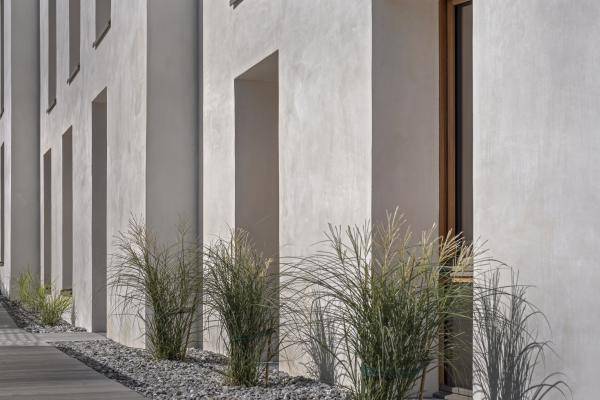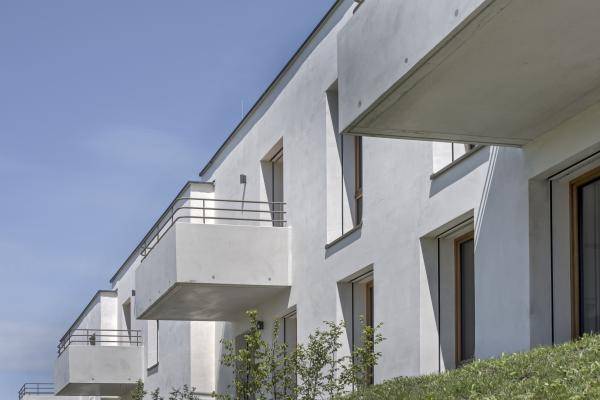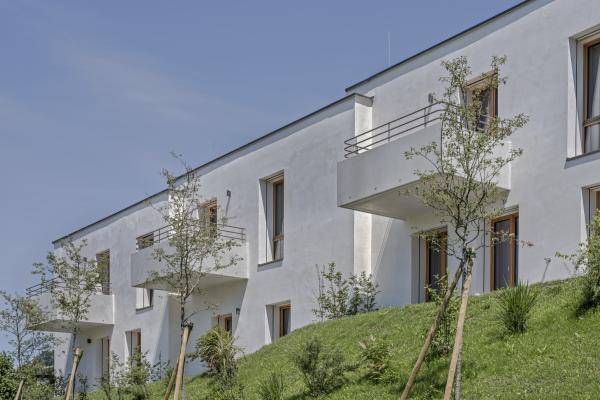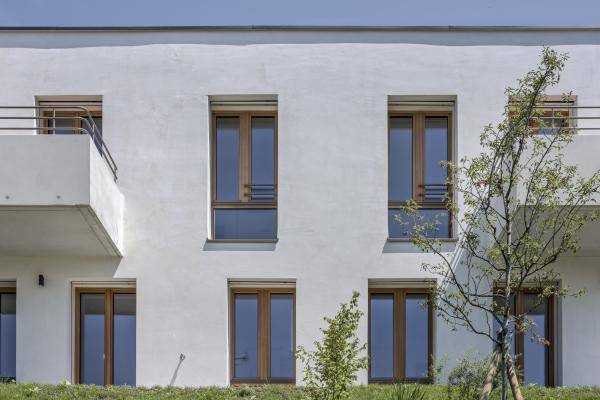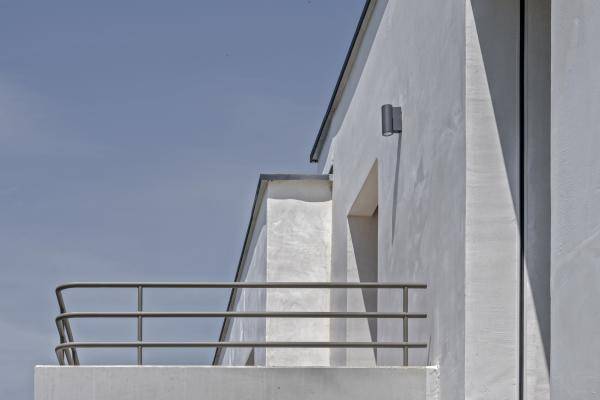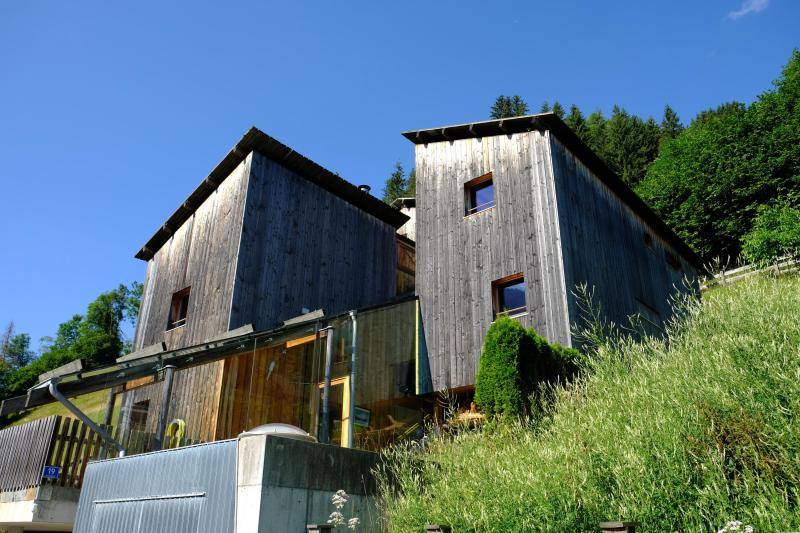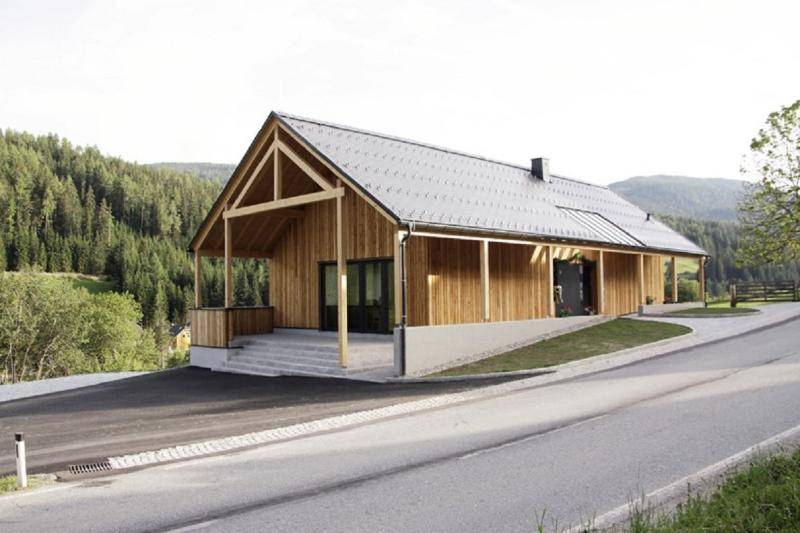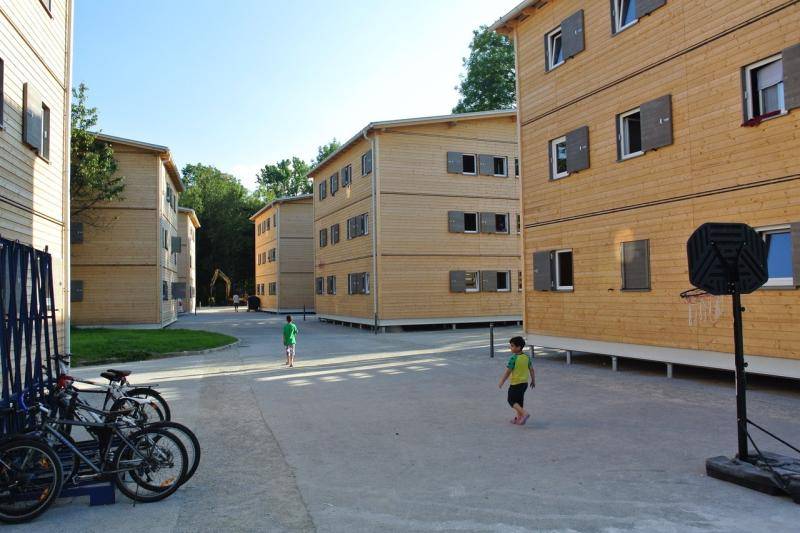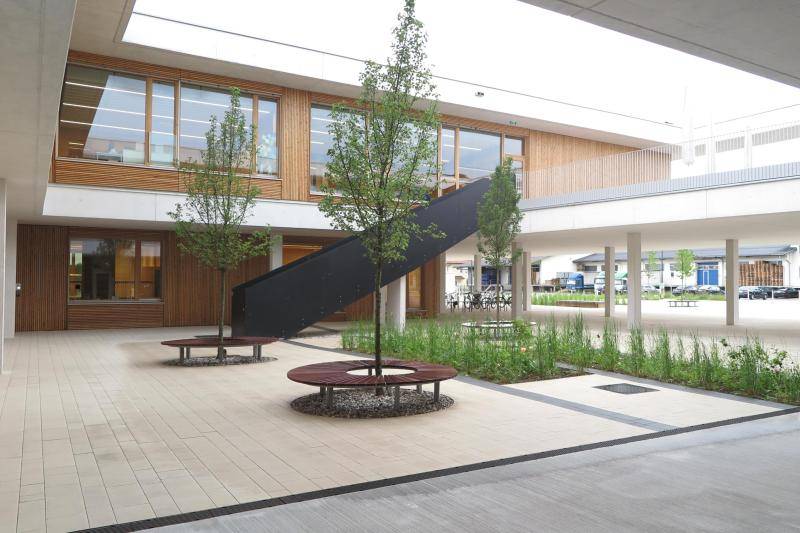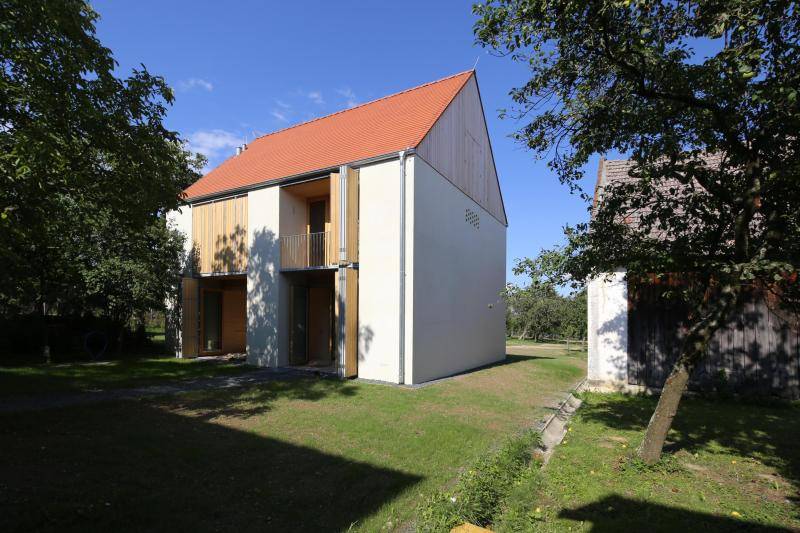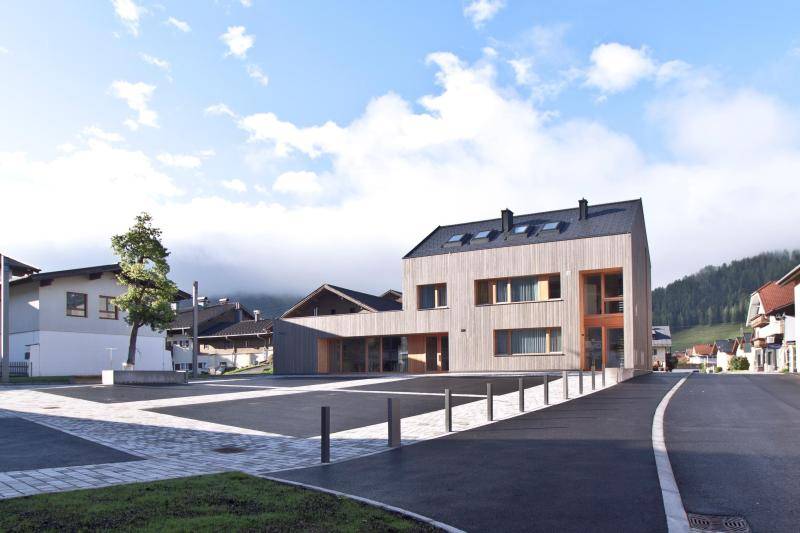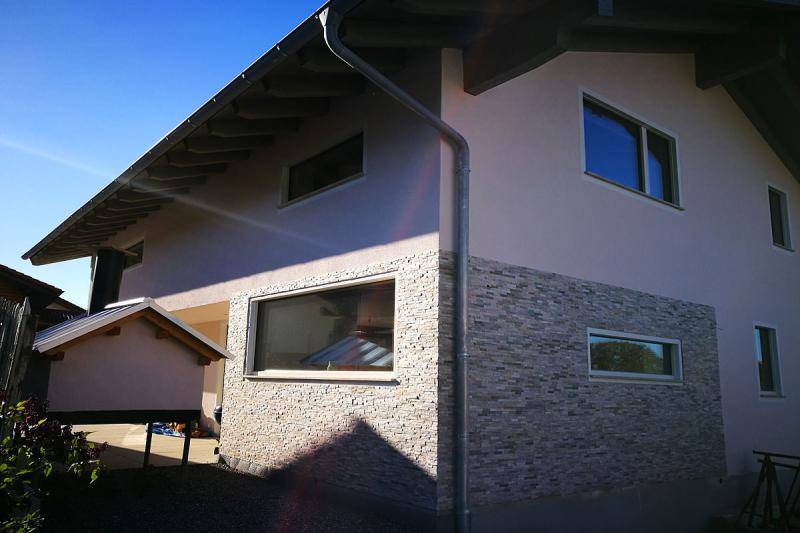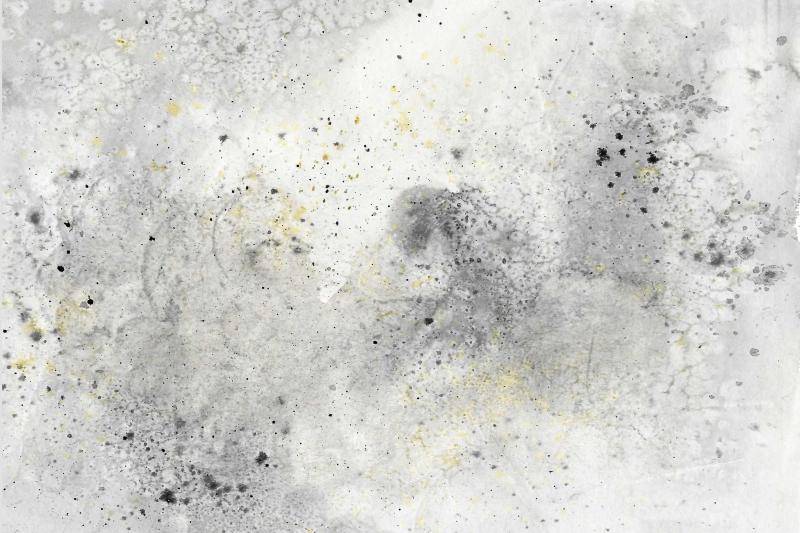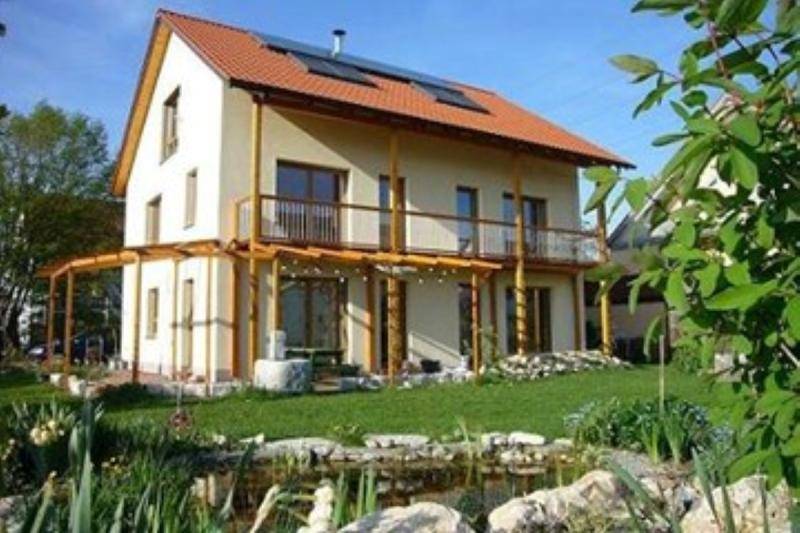2226 residential
The building in Dornbirn shows a premiere: For the first time, a residential building was constructed according to the principles of the Energy Concept 2226 by Baumschlager Eberle Architekten. It operates essentialy without devices for heating, cooling and ventilation.
Graf Immobilien GmbH Dornbirn
2020
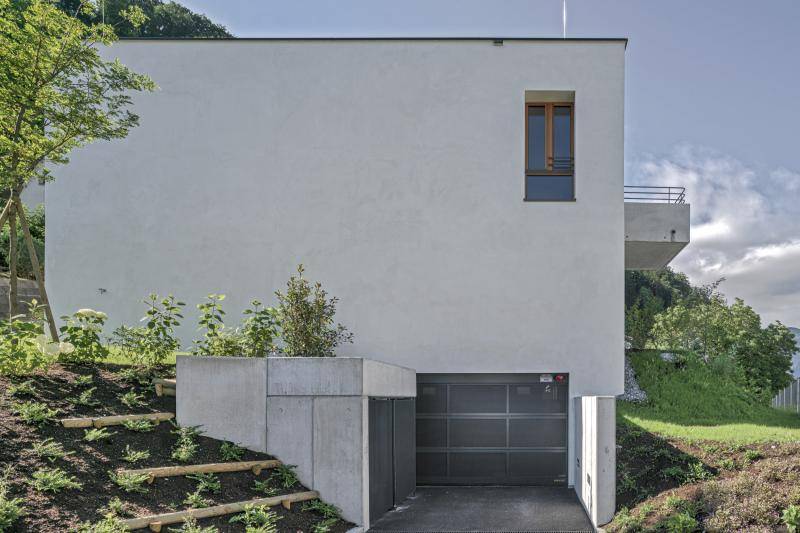
The building in Dornbirn shows a premiere: For the first time, a residential building was constructed according to the principles of the Energy Concept 2226 by Baumschlager Eberle Architekten. It operates essentialy without devices for heating, cooling and ventilation.
Residential buildings receive a lower energy input due to their use. People constantly radiate around 80 W to their surroundings. Therefore, an additional photovoltaic system was installed on the roof of 2226 Graf to complement the thermal storage of the structure. It is used to heat water and temper the building, while infrared-panels can provide additional heat to the apartments when needed. As a result, this system has a kind of ecological reinsurance.
Comfort zone Saving money, living comfortably and protecting the environment - these traditionally contradictory requirements have been resolved at 2226 Graf. In the apartment building, named after the building concept 2226 and the owner, with its eight three-room apartments, the annual average of the feel-good temperatures, that give the building its name, is maintained between 22 and 26 degrees. The prerequisites for the economically relevant waiver of operating energy and maintenance costs are the building configuration and the efficient control of energy flows in the facility by means of the 2226 Operating System. The necessary heat is provided by the residents with their body heat and the usual devices in the household. The 2226 Operating System controls the heat balance, humidity and CO2 concentration of the indoor air via automated air vents. Comfortable temperatures alone do not constitute an optimized indoor climate. Several other factors play a role: the warmth of the interior walls is similar to the room temperature and the humidity ranges between a desirable 40 and 60 percent. The result is noticeable living comfort, which is derived from natural resources and which is cost-effective.
The technical building system is deliberately reduced in order to significantly increase the longevity and thus the sustainability of the building. Where construction methods reach their traditional limits, contemporary software takes over to increase the living comfort. Smart-tech replaces high-tech to turn high-maintenance living machines into atmospherically pleasant homes for people.
Urbanistically, volume and geometry offer a dialogue to the single-family homes on the hillside and the housing developments below. The architecture corresponds with the building concept, both are strongly reduced in expenditure, bring aesthetic as well as energetic sustainability beyond all fashions and are adjusted to the needs of the inhabitants.
(Text in shortened form: Baumschlager Eberle Architekten)
